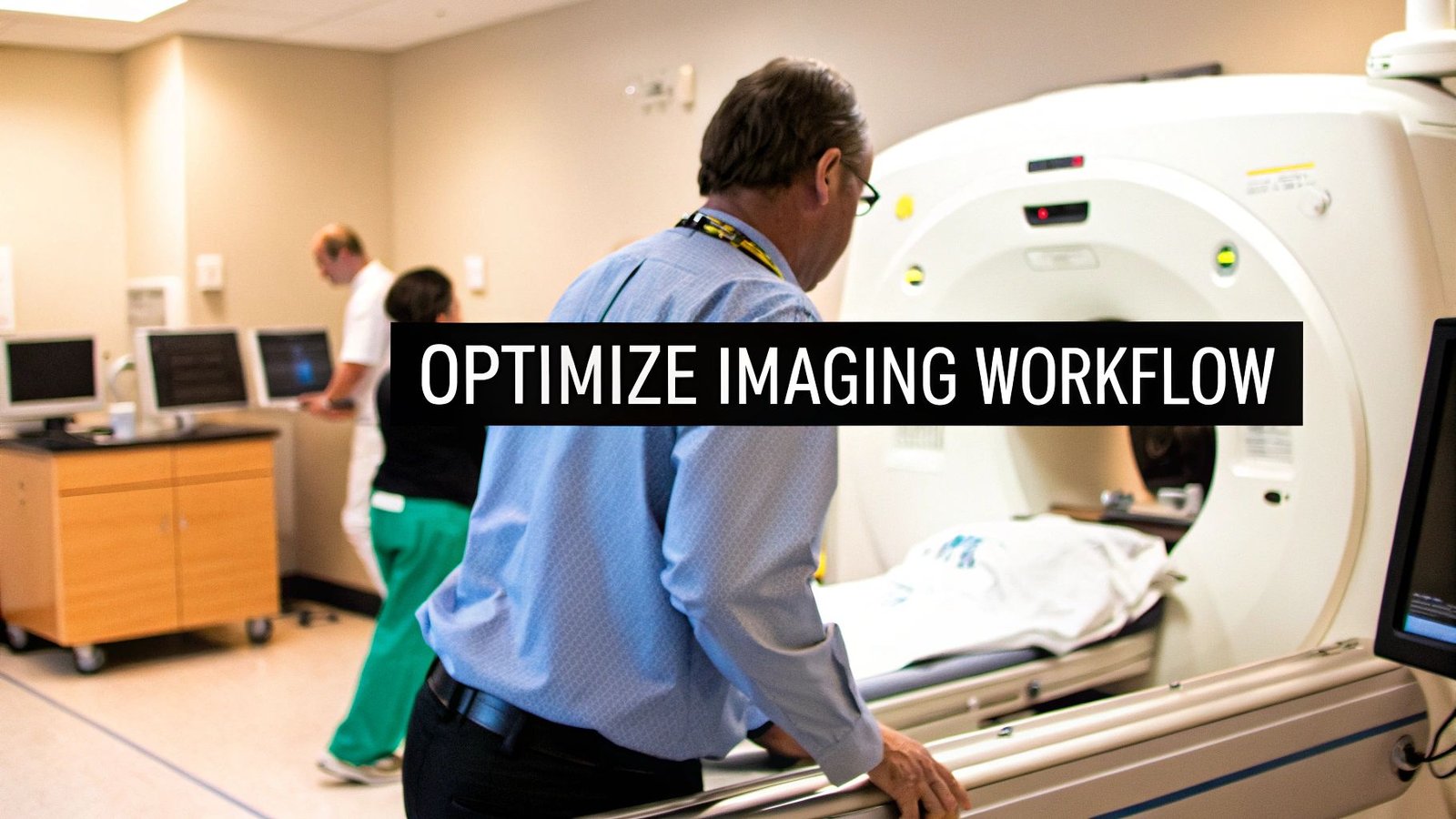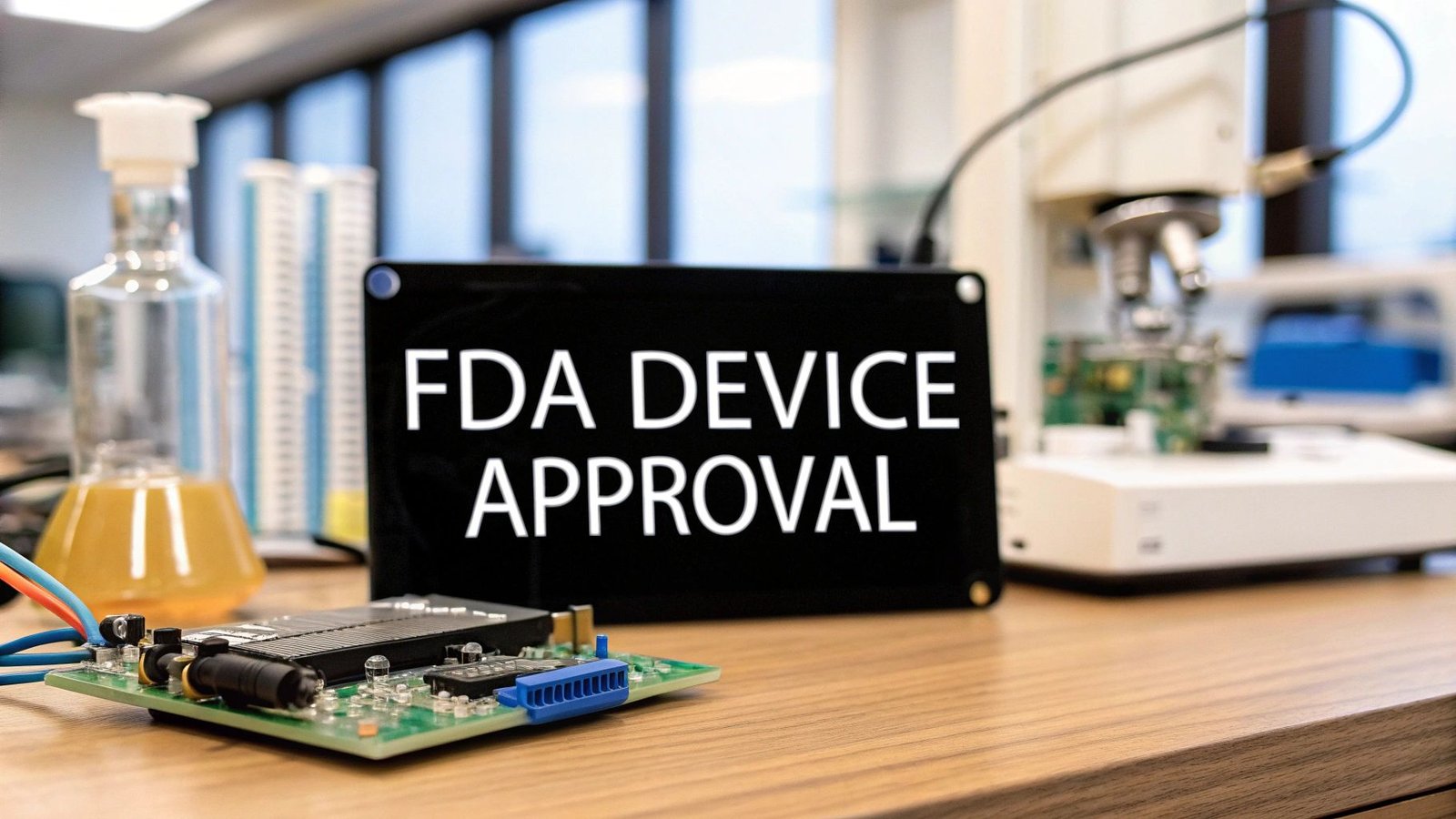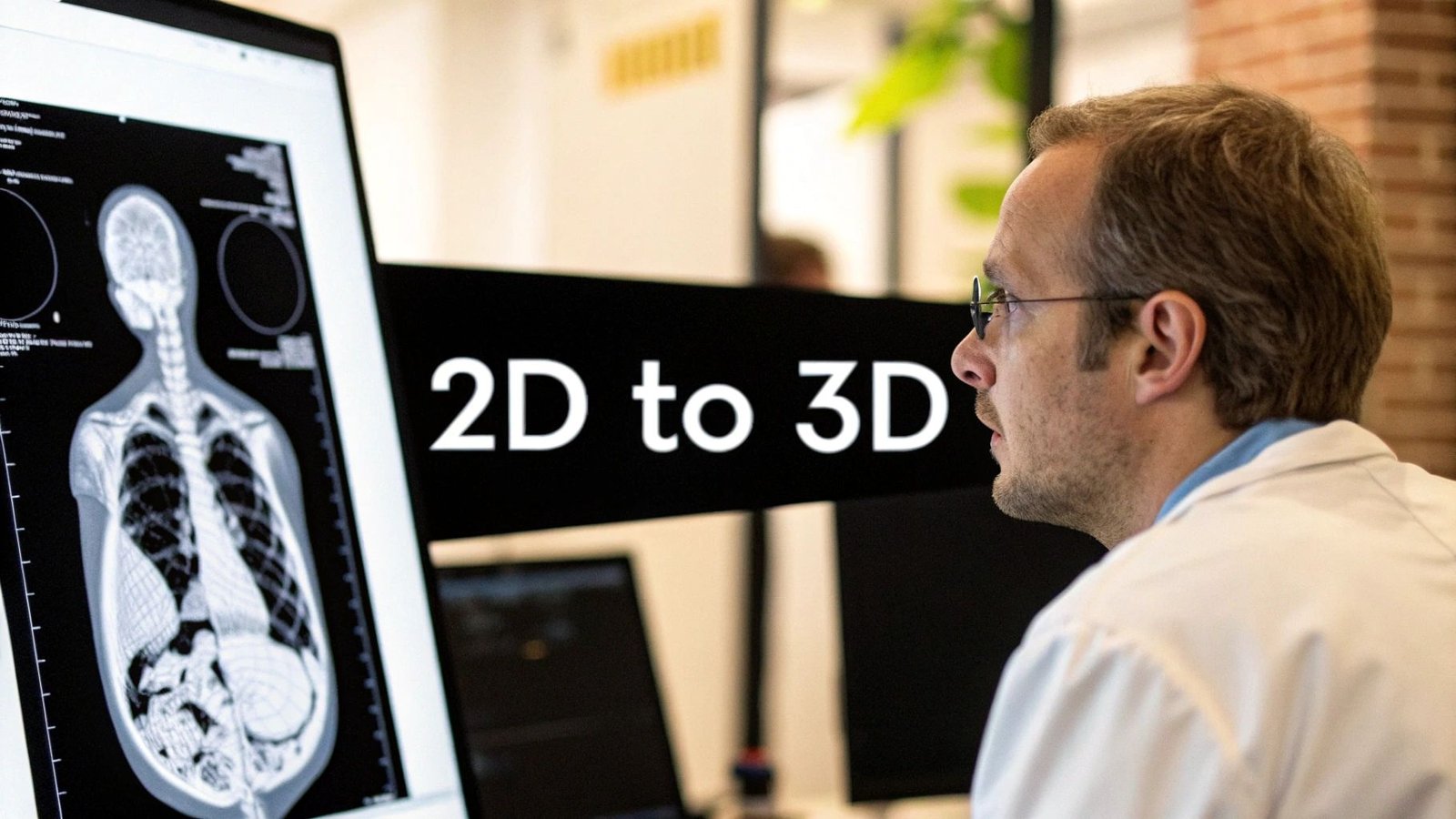The Revolution Behind Healthcare Workflow Automation
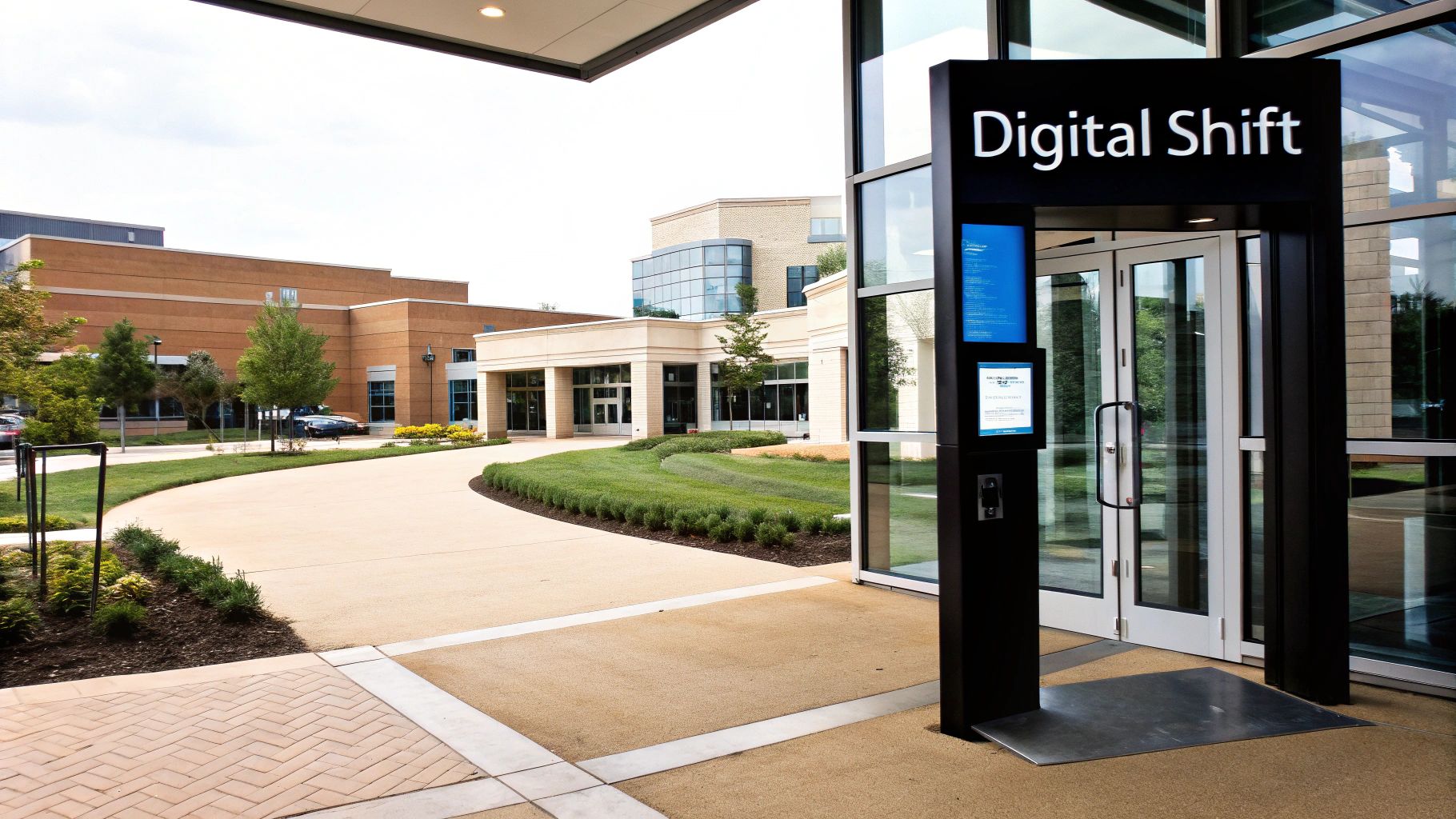
Healthcare professionals constantly juggle patient care with administrative tasks. Healthcare workflow automation offers a solution by reducing paperwork and allowing staff to concentrate on patient needs. This represents a significant shift in healthcare operations, moving from reactive to proactive care delivery. This change is driven by both advances in technology and supportive policy adjustments.
For instance, the Office of the National Coordinator for Health Information Technology (ONC) has identified key priorities for accelerating workflow automation through health IT. These priorities center on automating repetitive tasks like data entry and clinical documentation to improve efficiency and patient outcomes. Learn more about the ONC's efforts to improve healthcare interoperability here.
Partial Automation vs. Comprehensive Solutions
Many healthcare organizations have initially implemented partial automation, sometimes finding that it creates new challenges. Automating a single part of a larger process, like patient intake, while leaving other parts manual can lead to bottlenecks and frustration.
Comprehensive healthcare workflow automation, on the other hand, tackles the entire process. From appointment scheduling to billing, a fully integrated system streamlines operations and improves efficiency. This approach is essential for achieving significant and lasting results.
The Role of AI and Machine Learning
Artificial intelligence (AI) and machine learning (ML) are playing an increasingly important role in automating healthcare workflows. These technologies have moved beyond theory and are now actively used in healthcare settings. AI can analyze medical images, predict patient risks, and personalize treatment plans.
ML can identify patterns in data to optimize operational efficiency and anticipate future needs. This allows providers to make better decisions, improve diagnoses, and deliver more personalized care.
Key Components of Successful Automation
Regardless of an organization's size, successful healthcare workflow automation depends on several key factors:
- Clear Goals: Defining specific, measurable objectives is crucial. These goals might include reducing patient wait times, improving the accuracy of data, or freeing up staff for direct patient interaction.
- Clinical Buy-in: Clinicians must understand the benefits of automation and be actively involved in the implementation process to ensure successful adoption.
- Appropriate Technology: Selecting the right technology partner with a strong understanding of healthcare workflows is essential for seamless integration and long-term success.
- Change Management: Addressing resistance to change through effective communication and training is vital for a smooth transition to automated workflows.
By focusing on these components, healthcare organizations can successfully implement automation to achieve better patient care and a more efficient healthcare system. This transition empowers healthcare providers to focus on what matters most – delivering high-quality care.
Beyond Efficiency: How Automation Transforms Care
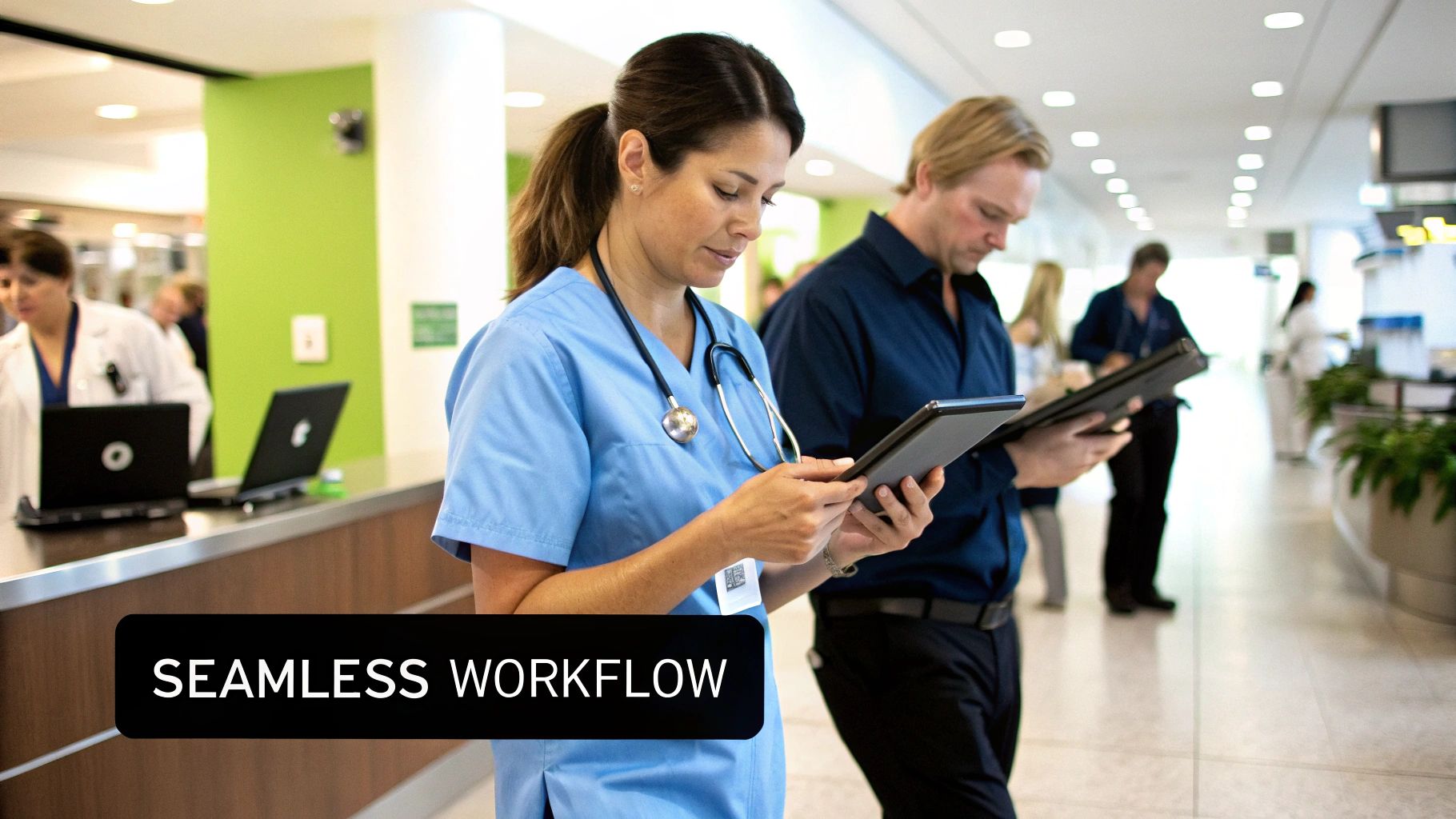
When healthcare providers reclaim time previously spent on administrative tasks, the benefits extend beyond simple efficiency gains. Healthcare workflow automation allows staff to shift their focus from paperwork to patient care, impacting everything from error rates to job satisfaction. This transformation isn't about speed alone; it's about enhancing the quality of care.
Reducing Errors and Ensuring Compliance
One key advantage of automation is a significant reduction in human error. Manual processes are inherently prone to mistakes. Automating tasks like medication dispensing or data entry minimizes these errors, leading to improved patient safety.
Additionally, healthcare workflow automation helps organizations maintain regulatory compliance. Automation ensures consistent adherence to protocols and simplifies reporting, reducing the risk of penalties and improving overall quality of care.
Healthcare workflow automation has significantly reduced administrative burdens, allowing healthcare staff to focus more on patient care. For example, 55% of healthcare leaders have implemented automation for billing and 59% for scheduling. This shift improves operational efficiency and boosts patient satisfaction by providing quicker access to services. Find more detailed statistics here.
Improving Provider Well-Being and Patient Satisfaction
The constant pressure of administrative work contributes to provider burnout. By automating routine tasks, healthcare workflow automation frees up providers to spend more time with patients. This fosters stronger patient-provider relationships and improves job satisfaction.
This positive change directly impacts the patient experience. When providers are less stressed and have more time for individualized care, patient satisfaction scores increase.
Real-Time Access to Critical Information
Healthcare workflow automation provides real-time access to critical information, enhancing clinical decision-making. Instead of searching through paper charts or waiting for lab results, providers can instantly access patient data. This enables faster diagnoses and more effective treatments.
This timely access is especially valuable in emergency situations where quick decisions can be life-saving. Providers can offer better care and make more informed choices, ultimately leading to better patient outcomes.
To illustrate the current state of automation adoption in healthcare, let's examine the following table:
Healthcare Workflow Automation Adoption Rates
This table shows the current adoption rates of automation across different healthcare processes.
| Healthcare Process | Automation Adoption Rate | Primary Benefits |
|---|---|---|
| Appointment Scheduling | 59% | Reduced wait times, improved efficiency |
| Billing and Claims Processing | 55% | Faster payments, reduced errors |
| Patient Record Management | 45% | Improved data accuracy, streamlined access |
| Medication Dispensing | 35% | Reduced medication errors, improved safety |
| Lab Test Ordering and Results Reporting | 25% | Faster turnaround times, improved diagnostics |
As shown in the table, areas like appointment scheduling and billing have seen higher adoption rates, while others like lab test reporting are still lagging. This highlights the ongoing progress and potential for further growth in healthcare automation. The benefits are clear: improved efficiency, reduced errors, and enhanced patient care.
The Bottom Line: Financial Impact You Can't Ignore
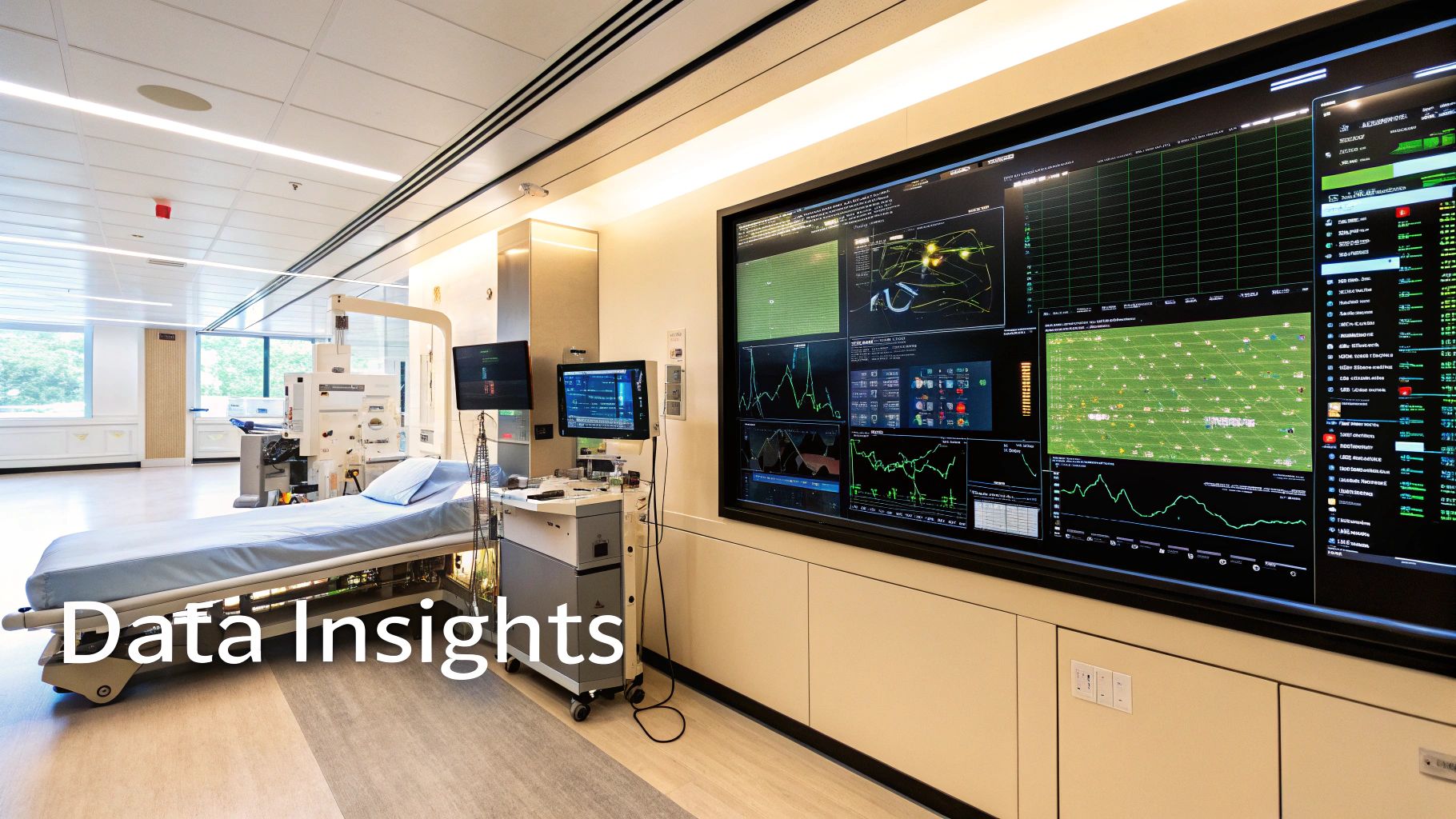
Beyond improvements to patient care and staff well-being, healthcare workflow automation offers substantial financial benefits. This section explores the return on investment (ROI) that automation delivers by examining real-world cost reductions and how organizations have addressed financial pain points. This financial impact can be a significant driver for organizational change and growth.
Implementation Costs vs. Long-Term Savings
Implementing healthcare workflow automation requires an initial investment. However, the long-term savings can be significant. The implementation cost varies depending on the organization's size and the complexity of the automated processes. The potential for cost reduction across different departments often outweighs the initial expense.
For example, automating claims processing considerably reduces costs related to manual data entry, paper handling, and postage. This also results in fewer errors and quicker reimbursements, ultimately improving the organization's cash flow. The integration of automation in healthcare has produced substantial cost savings.
Workflow automation in claims processing has reduced costs by 30-50% by minimizing manual data entry and improving accuracy. In the U.S., healthcare providers could save up to $16.3 billion annually by automating claims management alone. This financial benefit allows healthcare organizations to allocate resources more effectively, improving the quality of care and the institution's financial health. Discover more insights about workflow automation statistics here.
Addressing Financial Pain Points
Healthcare organizations face various financial challenges, including reimbursement delays and coding errors. These issues can significantly impact revenue and operational efficiency. Healthcare workflow automation helps address these pain points:
-
Streamlining billing processes: Automation reduces coding and billing errors, leading to faster reimbursements and fewer denied claims.
-
Improving payment accuracy: Automating payment posting and reconciliation helps organizations reduce errors and ensure accurate payment processing.
-
Minimizing denials: Automated systems can identify potential coding errors and billing discrepancies before claim submission, minimizing denial risks.
Expected Cost Reductions by Department
Healthcare workflow automation can generate cost reductions across several departments. These reductions appear in:
-
Administration: Reducing time spent on manual data entry and paperwork allows administrative staff to focus on other tasks, improving overall efficiency.
-
Clinical Operations: Automating processes like medication management and lab test ordering reduces errors and improves patient safety, potentially lowering costs associated with adverse events.
-
Billing and Revenue Cycle Management: Automating billing and claims processing reduces manual labor costs and improves revenue cycle efficiency.
By analyzing cost reductions per department, organizations can pinpoint areas where automation offers the greatest financial impact. This data-driven approach helps justify the investment in automation and tracks progress toward financial goals. This then sets the stage for implementing high-impact automation strategies.
High-Impact Processes Worth Automating First

Not every process in healthcare benefits equally from automation. This section focuses on identifying those offering the most significant return on investment when automated. This strategic approach to healthcare workflow automation maximizes efficiency and patient impact. We will analyze both clinical workflows and administrative processes, considering factors like implementation difficulty and patient impact.
Prioritizing Automation for Maximum Impact
When deciding which processes to automate first, prioritize those with lower implementation complexity and high potential for positive patient impact. This "low-hanging fruit" approach allows organizations to quickly realize the benefits of automation and build momentum for more complex projects.
For example, automating appointment scheduling and reminders often improves patient engagement and reduces no-shows. This is relatively simple to automate and can yield quick wins. Another excellent candidate is automating billing processes. This speeds up reimbursements and reduces errors and administrative overhead.
Clinical Workflows Ripe for Automation
Several clinical workflows stand to benefit substantially from automation. Automating medication management, for example, can minimize errors and improve patient safety. Automating lab processing, including ordering and results delivery, speeds up diagnoses and treatments.
Automating referral coordination, while highly beneficial, can be more complex. This is due to the need for seamless communication between different healthcare providers. The potential for reducing delays and improving patient care makes this worth exploring.
Administrative Processes: Streamlining Operations
Automating administrative tasks can significantly improve efficiency, freeing up staff to focus on patient care. Processes like patient registration and billing are often time-consuming and error-prone when handled manually. Automation can streamline these processes, reducing costs and improving accuracy.
Automating these tasks can reduce administrative burden, allowing staff to focus on more valuable patient interactions. This can improve both staff morale and patient satisfaction.
Evaluating Implementation Complexity and Expected Outcomes
The following table, "Healthcare Workflow Automation Comparison," compares various healthcare workflows. It highlights implementation complexity, potential cost savings, and anticipated patient impact. This allows for strategic decision-making regarding automation initiatives.
Healthcare Workflow Automation Comparison: Comparing implementation complexity, cost savings, and patient impact across different healthcare workflows
| Workflow Type | Implementation Complexity | Cost Savings Potential | Patient Experience Impact | Recommended Priority |
|---|---|---|---|---|
| Appointment Scheduling | Low | Medium | High | High |
| Billing & Claims Processing | Medium | High | Medium | High |
| Medication Management | Medium | High | High | Medium |
| Lab Processing | Medium | Medium | High | Medium |
| Referral Coordination | High | Medium | High | Medium |
| Patient Registration | Low | Medium | Medium | High |
This table emphasizes that strategically selecting which processes to automate first depends on individual organizational needs. While some processes offer quick wins with low complexity, others may require more investment but ultimately yield substantial long-term benefits. By considering these factors, healthcare facilities can maximize the impact of their automation efforts.
Making It Work: Implementation That Actually Succeeds
Successfully implementing healthcare workflow automation requires careful planning and execution. Many initiatives fail to deliver due to common pitfalls, but these can be avoided with the right approach. This section explores how to achieve real success with automation by addressing key challenges such as gaining clinical buy-in, selecting the right vendors, and managing resistance to change.
Gaining Clinical Buy-In: A Critical First Step
Clinical staff are essential to any successful healthcare automation project. Without their support, even the most advanced technology can struggle. Practical approaches to earning this buy-in include:
-
Early Involvement: Involve clinicians from the project's beginning. This allows them to shape implementation and ensures their needs are addressed.
-
Demonstrate Value: Clearly communicate how automation directly benefits clinical staff. This might include reducing administrative burdens and allowing more time for patient care.
-
Training and Support: Offer comprehensive training and ongoing support. This alleviates anxieties and ensures clinicians are comfortable using the new technology.
Choosing the Right Vendor: A Partnership, Not a Transaction
Selecting a technology vendor is a crucial decision. Look for partners who understand healthcare workflows, not just generic automation solutions. Key considerations include:
-
Healthcare Expertise: Choose vendors with a proven track record in healthcare. This demonstrates their ability to navigate the unique challenges of this industry.
-
Scalability and Integration: Ensure the chosen solution can scale with your organization's growth and integrate with existing systems. This ensures long-term compatibility and minimizes disruption.
-
Ongoing Support: Confirm the vendor offers robust ongoing support and maintenance. This is vital for addressing any issues that arise after implementation.
Managing Resistance to Change: A Human-Centered Approach
Change can be difficult, and resistance is inevitable. Addressing this requires a human-centered approach that acknowledges concerns and promotes open communication.
-
Transparent Communication: Keep staff informed throughout the entire implementation process. Explain the reasons for changes and address any questions or concerns.
-
Identify Champions: Enlist influential clinicians and staff to advocate for automation and encourage adoption among their peers. This creates internal support and fosters positive momentum.
-
Celebrate Early Wins: Highlight early successes to build momentum and demonstrate the tangible benefits of the automation initiatives.
Measuring Success: Key Performance Indicators (KPIs)
Tracking progress with relevant Key Performance Indicators (KPIs) is crucial. These metrics provide valuable insights into the effectiveness of the automation initiative and pinpoint areas for improvement. Some essential KPIs include:
-
Reduction in administrative time: Track decreases in time spent on administrative tasks, allowing clinicians more time for patient care.
-
Improvement in patient satisfaction: Measure the impact of automation on patient satisfaction scores through surveys and feedback.
-
Reduction in error rates: Monitor error rates in automated processes like medication dispensing or billing.
-
Cost savings: Quantify cost reductions from automation in areas like staffing, materials, and operational expenses.
Realistic Timelines and Resource Requirements
Implementation timelines and resource needs vary depending on organizational size and complexity. Smaller clinics might achieve automation within a few months with limited resources, while larger hospitals might require a phased approach over several years with dedicated project teams. Realistic planning is key. Develop a detailed project plan that outlines specific tasks, timelines, assigned personnel, and resource allocation. This plan should also consider potential challenges and include contingency plans. By taking this structured approach, healthcare organizations can successfully navigate implementation and realize the full potential of healthcare workflow automation.
Transformation in Action: Success Stories That Inspire
Healthcare workflow automation is rapidly changing the healthcare industry. This section explores real-world success stories, demonstrating the tangible benefits achieved through automation. These examples, from small clinics to large hospital systems, offer practical blueprints for similar improvements in various healthcare settings.
From Rural Clinics to Urban Hospitals: Automation at Every Scale
Automation isn't just for large institutions. Small rural clinics also benefit significantly from streamlined processes. For instance, a small clinic in rural Montana automated appointment scheduling and patient reminders, drastically reducing no-shows and improving staff efficiency. This allowed nurses to dedicate more time to direct patient care and community outreach.
Large urban hospitals face unique challenges but can also benefit from automation. A major hospital system in Chicago automated their lab processing, reducing result turnaround time by 40%. This faster access to crucial information enabled physicians to make quicker diagnoses and improve patient outcomes. These diverse examples demonstrate that organizations of any size can utilize automation for substantial improvements.
Quantifiable Results: Time Saved, Errors Reduced, and Satisfaction Improved
The impact of healthcare workflow automation is measurable. Success stories often highlight quantifiable metrics:
-
Time Reclaimed: A cardiology clinic in Florida automated prior authorizations, saving an average of 2 hours per authorization. This freed up staff to handle more complex cases and coordinate patient care more effectively.
-
Error Rates Reduced: A pharmacy in California automated medication dispensing, reducing errors by 60%. This significantly improved patient safety and minimized the risk of adverse drug events.
-
Cost Savings Realized: A hospital in Texas automated billing and coding processes, decreasing claim denial rates by 20%, resulting in substantial financial gains. This clearly demonstrates the positive financial impact of automation.
-
Patient Satisfaction Improved: A family practice in Colorado automated appointment scheduling and reduced wait times, boosting patient satisfaction scores by 15%. This highlights the direct correlation between automation and a better patient experience.
Adapting Success for Your Organization: Practical Takeaways
These success stories offer practical insights for organizations considering healthcare workflow automation:
-
Identify Your Pain Points: Start by pinpointing the biggest challenges in your workflows. Focus on areas where automation can deliver the most significant impact.
-
Start Small and Scale: Don't attempt to automate everything at once. Begin with a pilot project focused on a specific process and gradually expand as you gain experience and refine your strategy.
-
Prioritize Patient Impact: Focus on how automation can enhance patient care. This patient-centric approach will align with your organization's core values and ensure successful implementation.
-
Measure Your Progress: Track your results using key performance indicators (KPIs). This data-driven approach will demonstrate the value of automation and pinpoint areas for ongoing improvement.
Healthcare workflow automation is transforming healthcare delivery. By learning from the successes of others, organizations can adapt and implement these strategies to boost efficiency, reduce costs, and elevate patient care.
Are you ready to transform your healthcare organization with the power of AI? PYCAD, specializing in AI-driven medical imaging solutions, can help you achieve similar success. Learn how PYCAD can optimize your medical devices, enhance diagnostic accuracy, and improve operational efficiency by visiting their website.

